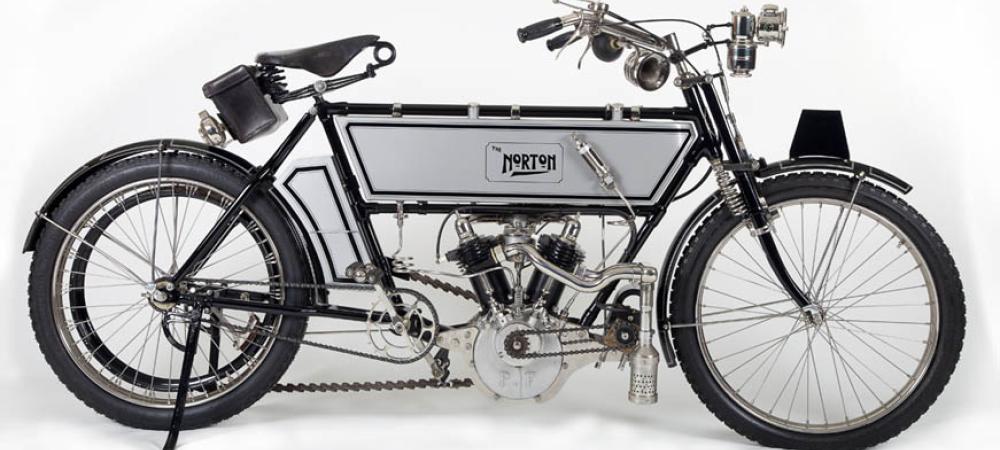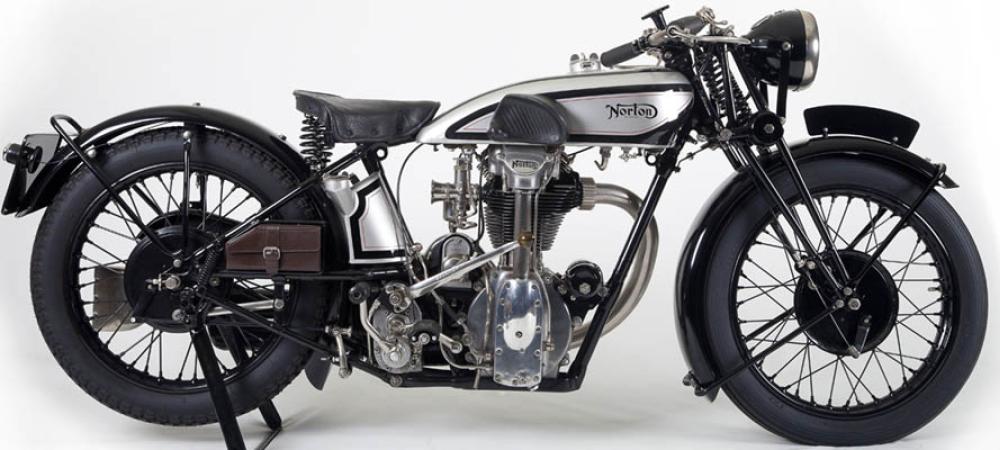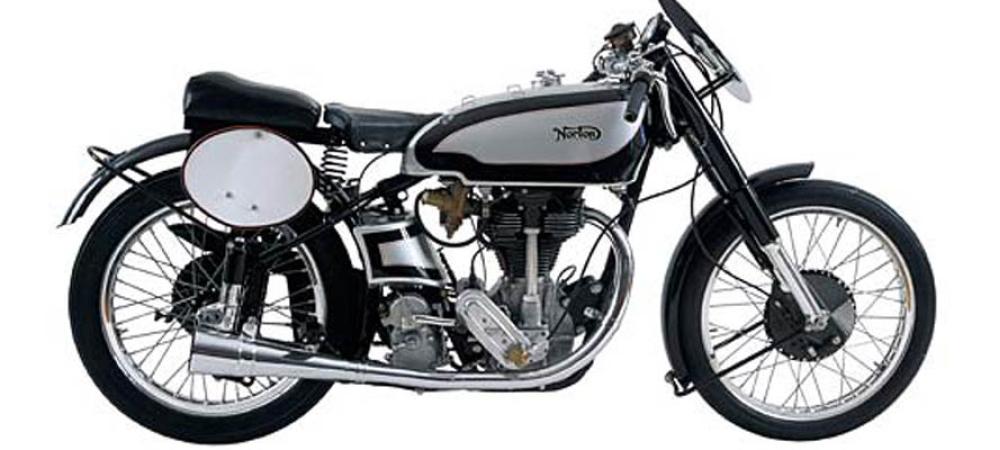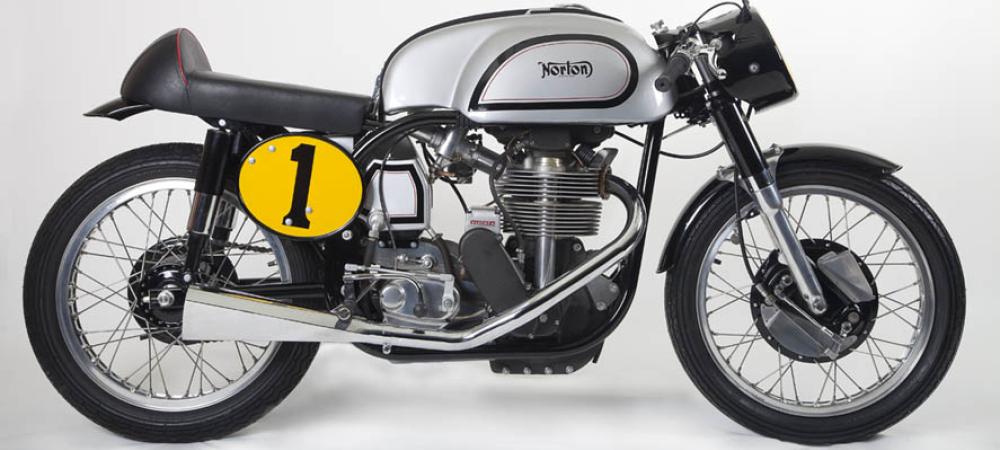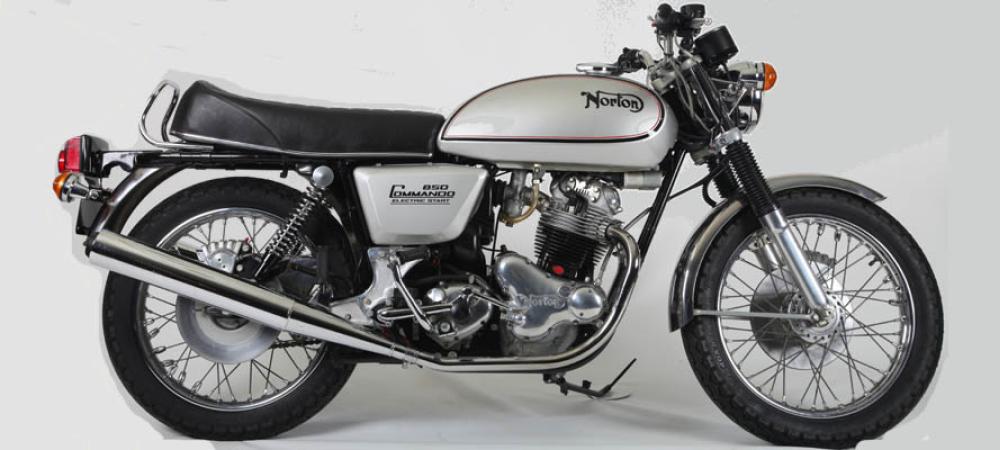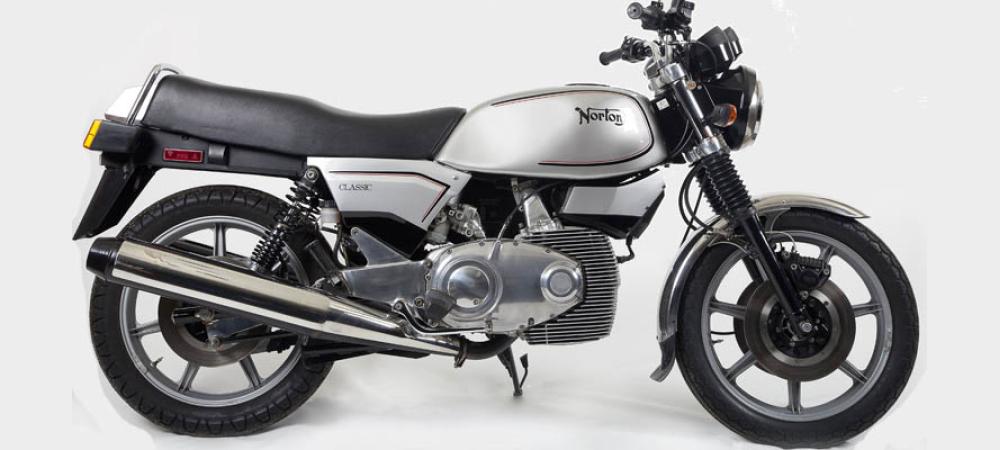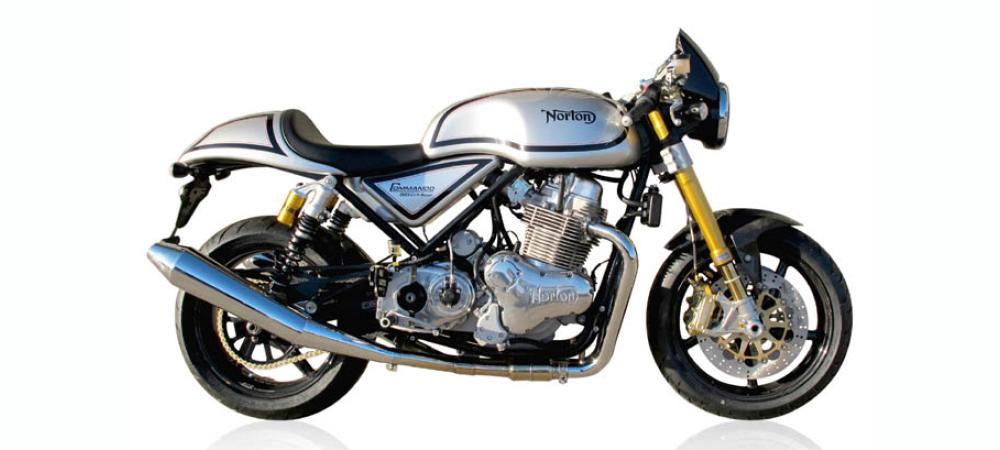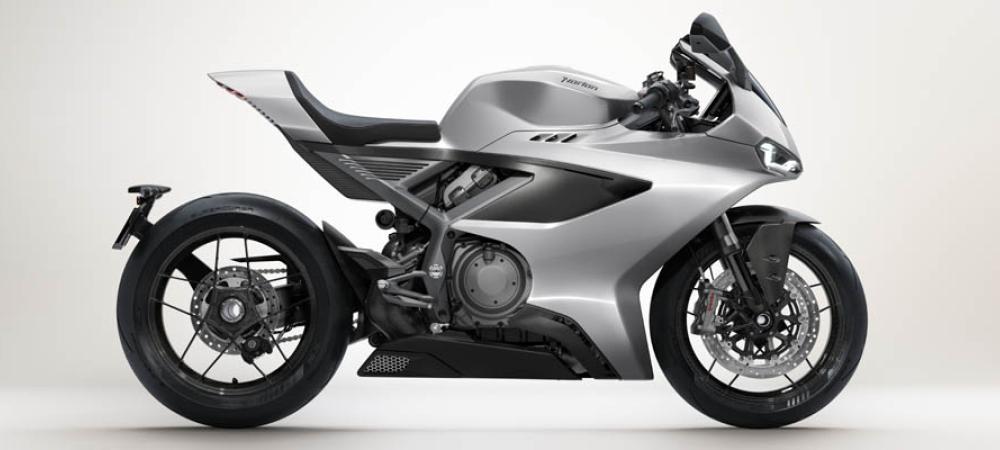A review of correspondence from NOC-L
Sticking air slides
|
"While stripping my Atlas I thought I would investigate the problem of the carb slides sticking when I try to tighten the nuts which hold them to the head I found the face on both of them was 1mm out of flat. These carbs were new last year: how can they make a precision intrument like a carb so wrong?" |
This is a common problem in Amal carburettors, and has little to do with precision of manufacturing. It happens for one or more of the following reasons:-
- (1) The flange nuts are overtightened during installation
- (2) The O-ring in the carb flange is too thick, causing the flange to bend when the nuts are tightened
- (3) The Tufnol insulating washer (on those machines that use them) is crushed at its ends, from overtightening
It doesn't take much to distort the carb flange, and cause the slide to bind, especially on a new carburettor. You shouldn't need to tighten the nuts very much to do prevent air leakage at the flange.
Greg Kricorissian (grkricor@ccs.carleton.ca) on NOC-L 13th. Mar 1997
Re-use of gaskets not advised
I experienced the same problem when I bought a 932 single carburettor and manifold. I couldn't figure out why the slide would get stuck as soon as I tightened the carburettor to the manifold. I thought the flange on the carburettor was weaker than the original and that it was bending out of true, because I was using an old Tufnol gasket which had too much 'give' in it.
I just renewed the Tufnol gasket and the carburettor became airtight with no sticking slide. I must admit that it never occurred to me to check if the flange face was out of true; I assumed this would be okay on a new 'precision' instrument.
Adrian Morgan (a.morgan@cowan.edu.au) on NOC-L 13th. Mar 1997
Overtightening flange nuts
Overtightening the nuts on the flange will cause exactly the problem described. Use new Nyloc nuts and tighten the carburettors just enough to seal them against the head. Too much tension on the sides of the flange will cause the body of the carburettor to distort, making the slides stick in the bores.
Ken Dubey (kdubey@exchange1.pria.com) on NOC-L 13th. Mar 1997
Alternative locknuts to Nylocs
I would suggest not using Nyloc nuts on something that gets so hot. There are locking nuts [e.g. Staytite - Editor] that lock by distorting the metal for such uses. Alternatively, you could use Loctite.
Mike Taglieri (miketync@aol.com) on NOC-L 14th. Mar 1997
Comparison of locknut types
The locknuts described above are called 'Stover' nuts. However, they are intended for one-time use only, and then must be replaced: not too practical for what we are talking about. Stovers are also designed for a specific length of stud, leaving only a few threads past the nut, otherwise they will jam and bugger the stud threads badly. Then, when you attempt to back the nuts off, the nut will be captive to the stud, and you'll find the stud will wind out from the manifold. All in all, not the thing for our beloved Commando inlet manifolds!
I doubt modern 'Nyloc' nuts will give any trouble on Commando inlet manifold studs. Recall that the manifold itself is insulated from the heat of the head by a thick Tufnol washer, and that the manifold is made from aluminum that readily dissipates any heat to the surrounding air. I don't think you'd find the manifold gets warm enough to damage the nylon inserts in the nuts; if it did, you'd also have real trouble with boiling gas in the float chambers. Having said all the above, I prefer to use the standard factory issue: a small o.d. split/spring washer under the carburettor nuts. They're cheap, readily available, easy to snug them up just right, and I've never had a single one come loose!
Greg Kricorissian (grkricor@ccs.carleton.ca) on NOC-L 15th. Mar 1997
Flat spot
|
"Recently my Norvil has developed a flat spot at about 4500 r.p.m. in top and to some extent in 3rd. The bike will run at this speed in these gears, but is reluctant to accelerate. If I drop a couple of cogs, blast up to a rev range beyond this and then select top gear, throttle response returns and it will spin up to the redline. The plugs now run dark brown or black! On stripping the carbs I found that the main jets are well over size - 310 as opposed the book size of 260 (the bike does have an unusual exhaust which is almost straight through) and a pair of tired needles. |
I don't think you've got a main jet problem because your Norvil will rev out. By the size of the main jets I would suspect its fitted with a sporty cam. If that's the case, maximum torque will be developed higher up the rev range, and you might have a weak spark - that's when the motor will snuff it out. The coils, I've been led to believe, harmonise at about 3500 to 4500 r.p.m., and fail in that band. But I found it was the low tension connections on my coils which had corroded under the copper plating, causing a high resistance giving me similar symptoms. This usually only gives problems with electronic ignitions that run the coils in series. However, needle jets, and needles do wear. So the first thing to do is drop your needles a notch. Don't forget, when rich, adjust one size at a time. When weak, adjust two sizes.
Dave Taylor (lsd.taylor2@virgin.net) on NOC-L 22nd. Mar 1997
Setting up carburettors
If your motor is standard, the main jets are too large, however, they will only come in to play at the last quarter of throttle at say 5500 r.p.m. The popping on over run is caused by weakness in your pilot system, i.e. the air screw. Try turning it in a quarter to half a turn. The other item that can cause weak/rich running is the air filter. The needle should be set to suit individual motors and conditions.
The easy way to check for correct running is to get the motor up to running temperature, and find a safe straight road, slightly up hill if posible. Then get up to the throttle opening that covers your problem area, in top, with the motor pulling, and slowly close the throttle. If the bike accelerates slightly, it's running weak. If it boggs slightly, it's rich. Modern fuels seem to give light weak readings, but take care - it's better to run slightly rich, than to burn holes in your pistons and valves. Your motor may be standard, but exhausts, and air filtration will alter the carburation.
Dave Taylor (lsd.taylor2@virgin.net) on NOC-L 22nd. Mar 1997
Cutting away air slides
|
"I have a problem with my newly re-sleeved carbs. Prior to re-sleeving they ran just great except for a very unstable idle - 800 to 1500 r.p.m. but now, post rebuild, a rock solid 1000 r.p.m. However, where before there was good strong acceleration all the way from closed throttle to wide open, if you now apply the gas slowly things are fine but should you apply the gas fast, the engine bogs down then catches and takes off. Should you then shut the gas down and try to go again it works just fine. After running on a steady throttle for a while the problem is back once you open it quickly. The only thing that has changed is the sleeving. Petrol consumption is up from 55 m.p.g. to 45 m.p.g. One last thing, the engine sometimes shudders on acceleration in addition to the bogging." |
After sleeving my carburettors, my bike didn't run as crisply, although it also idled much better. The person who did the job for me said that this might be the case, and offered to give me a pair of slides with more cutaway to compensate for less air leakage past the slides. Rather than send them back, I just added more cutaway myself. It made a big difference (better).
Dave Hatch (aef@icx.net) on NOC-L 21st. Apr 1997
More on air slides
I would think that your slides are too rich. Your old carburettor bodies were probably leaking air, making the slides run weak, and I suspect they might have been changed for the ones fitted now, i.e. rich (smaller cut out). Check your slide number it should be 3½, depending on the model.
Dave Taylor (lsd.taylor2@virgin.net) on NOC-L 22nd. Apr 1997
Some Amal carburettor data
When I was at the Stafford Show recently, I made my way to the Hitchcock's Motorcycles stand, and obtained a copy of their combined Amal carburettor parts lists and Service Notes, (about 10 sheets of double sided A4 photocopied stuff stapled together). Both the notes and parts lists are invaluable if you have a post 1930's British bike, which will of course, have an Amal carburettor fitted. The information covers Concentric, Mk.l and Mk.2, plus Monobloc 375, 376, 389 and 689, and pre-Monobloc series carburettors.
Anyhow, some time back there was some discussion about adjusting the level of fuel in your carburettor, by adjusting the hight of the needle valve seat: you warm the float bowl, then bash the brass seat to the right hight, checking the hight by looking at the float position. There was also some discussion about how this was best done, by holding the float bowl and pressing the pivot pin into the bowl or just by holding the pin flush. All this originally came from a Triumph Service Note, following problems experienced at Meriden in the 60s if I recall correctly.
This list of service parts for, e.g. the Mk.l Concentric, shows a number of different bowls for the same carburettor:-
| Float Bowl | 0.10" (2.5mm) seating | 622/050 |
| Float Bowl | 0.10" seating with drain plug | 622/055 |
| Float Bowl | 0.062" (1.6mm) seating | 622/052 |
| Float Bowl | 0.062" seating with drain plug | 622/057 |
| Float Bowl | 0.125" (3.2mm) seating | 622/051 |
| Float Bowl | 0.125" seating with drain plug | 622/056 |
| Float Bowl | 0.156" (4.0mm) seating, alcohol only | 622/054 |
Note: the same part numbers apply to the 600, 900 and 1000 series. As the same parts apply to all of the series of carburettors available for the Concentric Mk.l, I assume the only difference is the size of the seating. But is this the size of the hole in the bottom of the carb for the fuel to enter, or is this the hight of the seat relative to someting else, (perhaps the size, thickness, of the seat?). Perhaps Amal was unloading excess stock at the factory and Triumph had to make the manual adjustments. In any case this provides yet another variable in the Amal carburettor saga, so you now have the following to consider when configuring a carburettor such as the Mk.l Concentric fitted to a Commando:-
| Size of choke | 28/30/32mm |
| Cutaway in the throttle slide | 2.5/3.0/3.5 etc. |
| Needle | 2 or 4 ring |
| Height of the needle | 1, 2 or 3 |
| Size of pilot jet | Standard threaded hole, bushed or 25/30 etc. |
| Size of needle jet | 106/107 etc. |
| Size of main jet | 260/280 etc. |
| Jet holder | At least two types in circulation |
| Spray tube | Cutaway or not |
| Float bowl | Size of seat |
There is, of course, a form of configuration management which Amal introduced. Each carburettor gets a configuration number, such as 900/052, where the '900' is the Series type, such as the Concentric 900, and the '52' corresponds to the configuration of the carburettor (the size, type and setting of all the above). However, I have not yet found, beyond the scant information in Bacon's restoration books, any of the original information from Amal which lists the configuration numbers and settings.
I have been working on a Japanese bike recently, and sorting out a carburettor problem, noticed that they have little nipples on the float bowls with valves. You connect a piece of plastic pipe, open the valve and look at the fuel height in situ. With the bottom plug on the Amal Mk.l Concentric, it should be possible to do the same thing, to look at the fuel height dynamically. The plugs are plastic, and you could drill a hole in a spare one and look at the height, assuming the needle valve doesn't leak too much.
Peter Aslan (paslan@uk.mdis.com) on NOC-L 5th. Jun 1997
Setting up Amal carburettors
The following has been kicking around my hard drive since I copied it out some years ago and following discussions of setting up Amals, I thought I would finally post it.
- The carburettor is automatic throughout the throttle range, the air valve (choke) should always be wide open, except when used for starting or until the engine has warmed up. We assume normal petrol is used.
- All tests should be performed on an open road with a slight uphill gradient, so that on test the engine is pulling.
- Due to overlap between the jets which are effective at different throttle ranges, the following tuning procedure should be performed a number of times, (at least twice) to confirm all settings and jets as correct.
- Before starting the following procedure, ensure that when the throttle is fully open, that the throttle slide fully clears the carburettor air stream. Both the front and the back of the throttle slide should be clear, to allow for the slide cut away. Similarly, the air valve, slide should also fully clear of the air stream when operated, ensure that the friction adjustment is adjusted to hold the air valve, firmly in the open position.
- Before starting the following procedure, ensure that there is some free play in the throttle cables, otherwise it will be impossible to make slow running, or pilot jet adjustments.
Main Jet
With throttle in position 1, (fully open). If at full throttle the engine runs heavily', the main jet is too large. If at full throttle, by slightly closing the throttle or air valve, the engine appears to have better power, the main jet is too small. With the correct sized main jet the engine at full throttle should run evenly and regularly with maximum power. If testing for speed work ensure that the main jet is sufficient for the mixture to be rich enough to keep the engine cool, and to verify this examine the sparking plug after taking a fast, (full throttle) run, declutching and stopping the engine quickly. If the plug body at its end has a cool appearance, (light tan on the spark plug insulator up next to the centre electrode) the mixture is correct: if sooty, the mixture is rich: if however there are signs of intense heat, (white with particles on the insulator) the mixture is too weak and a larger main jet is necessary.
Pilot Jet
With the throttle in position 1, (closed). With the engine running too fast with the twist grip shut off and the throttle shut down on the throttle adjusting screw, and ignition set for best slow running:-
- screw out the throttle adjusting screw until the engine runs slower and begins to falter, then screw pilot air adjusting screw in or out to make engine run regularly and faster
- now gently lower the throttle adjusting screw until the engine runs slower and just begins to falter, adjust the pilot air adjusting screw to get best slow running. If this second adjustment makes the engine run too fast, go over the job again a third time. Both the throttle adjusting screw and pilot air screw have an O-ring fitted to hold the adjustment by friction
Throttle Cut Away
With throttle in position 3, (1/3 open). If, as you take off from the idling position, there is an objectionable spitting from the carburettor, slightly richen the pilot mixture by screwing in the air screw sufficiently, but if this is not effective, screw it back in again, and fit a throttle slide with a smaller cut away. If the engine jerks under load at this throttle position and there is no spitting, either the jet needle is much too high or a larger throttle cut away is required to cure richness.
Needle
With the throttle in position 4, (3/4 open). The needle controls a wide range of throttle opening and also the acceleration. Try the needle in the lower position, with the clip in the groove at the top; if acceleration is poor and with the air valve partially closed the results are better, raise the needle by two grooves. If very much better try lowering the needle by one groove and leave it where it is best. If the mixture is still too rich with the clip in groove No.1 (nearest the top), the needle probably wants replacement because of wear. If the needle itself has had several years use replace it also.
Finally
Go over idling again for the final touches.
Peter Aslan (paslan@uk.mdis.com) on NOC-L 23rd. Jul 1998

